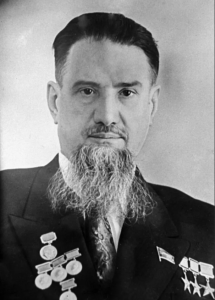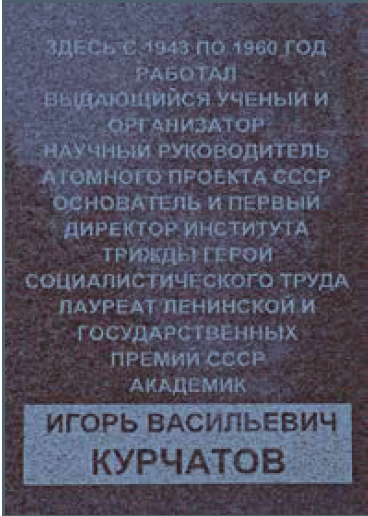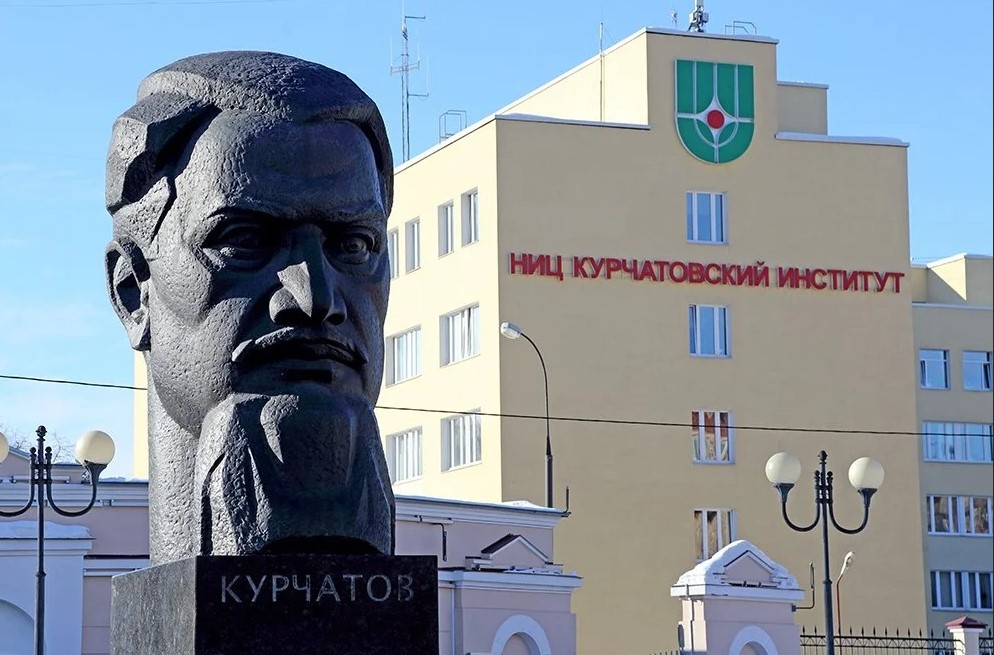Igor Vasilyevich
Kurchatov
1903-1960

Igor Vasilyevich Kurchatov was the Head of the Laboratory of Measuring Instruments of the USSR Academy of Sciences, Director of the Institute of Atomic Energy of the USSR Academy of Sciences, Academician of the USSR Academy of Sciences, Three Times Hero of Socialist Labor. He was born on January 21, 1903 in the village of Simsky Zavod of the Ufa district of the Ufa province, now the city of Sim of the Ashinsky district of the Chelyabinsk region. In 1923 he graduated from the Faculty of Physics and Mathematics of the Crimean University in Simferopol. From 1925 to 1943, Igor Kurchatov worked at the Leningrad Institute of Physics and Technology under the supervision of A.F. Ioffe. In 1933 I.V. Kurchatov began to study the physics of the atomic nucleus. In 1934 he discovered the branching of nuclear reactions caused by neutron bombardment, investigated the artificial radioactivity of a number of elements and in 1935 discovered the phenomenon of nuclear isomerism in artificially radioactive isotopes. In-depth research related to this phenomenon allowed Kurchatov to create a theory of nuclear isomerism. The research carried out in 1940 by Soviet physicists K.A. Petrzhak and G.N. Flerov in the laboratory of I.V. Kurchatov was crowned with the discovery of spontaneous fission of uranium. During the Great Patriotic War, together with other scientists, he performed a number of works of great defensive importance. Since 1943, he was in charge of scientific work related to the atomic problem. I.V. Kurchatov made a huge contribution to the development of scientific foundations and industrial methods of atomic energy production in the USSR. Under his leadership, a cyclotron (1944) and the first nuclear reactor in Europe (1946) were built, and in 1949 the Soviet atomic bomb was created. On August 29, 1949, the first atomic (plutonium) bomb “RDS-1” was detonated in the USSR at the Semipalatinsk test site in the Kazakh steppe. This was an adequate response to the threats of the United States, which by that time had possessed nuclear weapons and had been repeatedly tested by them: the explosion of a plutonium bomb on July 16, 1945 and the use of this deadly weapon at the end of World War II, when a uranium bomb was dropped on the Japanese city of Hiroshima on August 6, 1945, and on the Japanese city of Nagasaki on August 9, 1945 – a plutonium bomb. Now it has become known to the whole world that the Soviet Union also possesses this deadly weapon of deterring aggressors. By the decree of the Presidium of the Supreme Soviet of the USSR dated October 29, 1949, for exceptional services to the state in the performance of a special task, Igor Kurchatov was awarded the title of the Hero of Socialist Labor with the award of the Order of Lenin and the Hammer and Sickle gold medal. On September 24, 1951, a successful test of an implosive type atomic bomb developed for heavy strategic bombers (RDS-2) was conducted at the Semipalatinsk test site. In order to carry out detailed measurements, the explosion was carried out, as two years earlier, at the tower. On October 18 of the same year, the RDS-3 atomic bomb was tested, the filling of which, unlike the previous one, consisted not of plutonium, but of its mixture with uranium. This time, the ammunition was dropped from the Tu-4 strategic bomber using a bombing mechanism. As shown by studies of the atmosphere and soil, as well as sampling along the path of the cloud, after an air explosion, radioactivity was 109 times less than from a ground explosion. The test of the RDS-3 charge showed significant opportunities in the field of saving scarce plutonium for the development of new nuclear weapons. By the decree of the Presidium of the Supreme Soviet of the USSR dated December 8, 1951 (with the stamp “Not subject to publication”), Igor V. Kurchatov was awarded the second Hammer and Sickle gold medal for exceptional services to the state while performing a special task. Under the leadership of I.V. Kurchatov built a cyclotron (1944) and Europe’s first nuclear reactor (1946), created the Soviet atomic bomb (1949) and the world’s first thermonuclear bomb (1953), built the world’s first industrial nuclear power plant (1954) and the largest facility for conducting research on the implementation of controlled thermonuclear reactions (1958). In the last years of his life, I.V. Kurchatov worked a lot on the problems of the peaceful use of atomic energy.
Address: Moscow, Akademika Kurchatov pl., 1, p. 1

